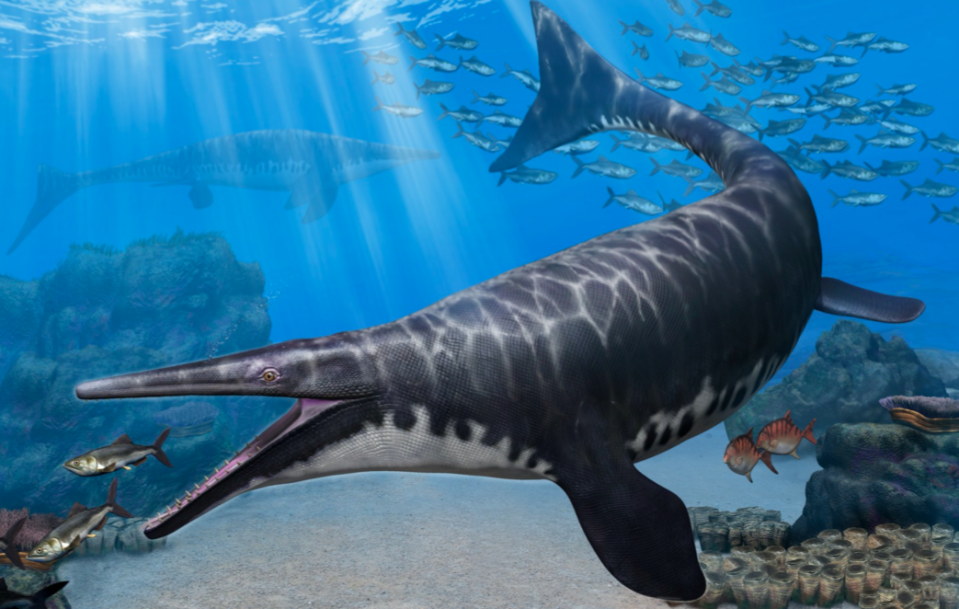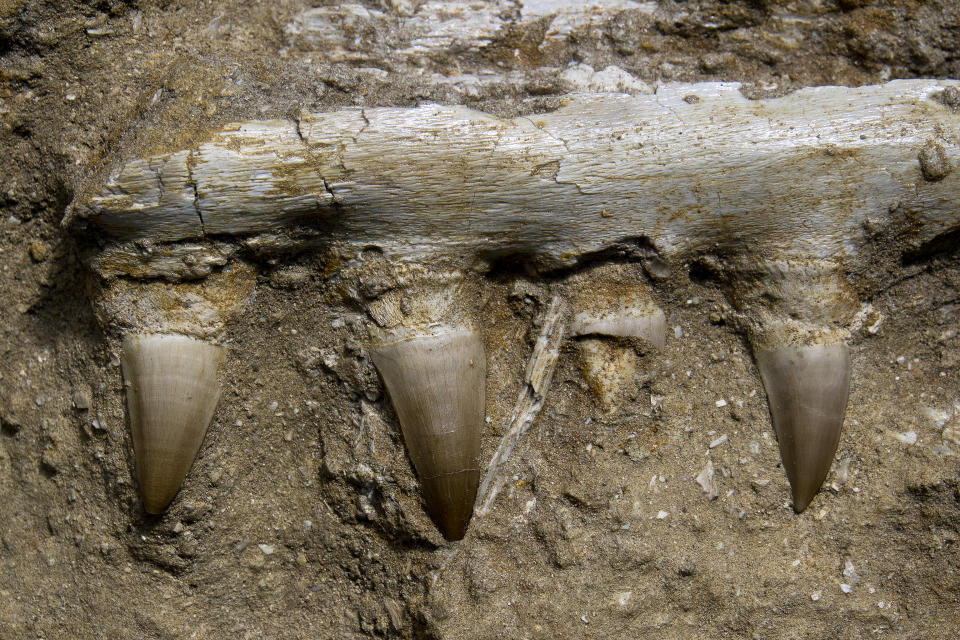New mosasaur species from Morocco that had 3ft long skull and fish-grabbing crocodile snout discovered

Researchers in Canada have identified a new species of ancient marine predator with a 3ft long skull and a crocodile-like snout that once ruled the seas.
The Gavialimimus almaghribensis is a new type of mosasaur, that is said to have lived at the end of the late Cretaceous period between 72 and 66 million years ago.
The dinosaur was catalogued and named by an international research team, led by Catie Strong from the University of Alberta.
The fossilised remains of the reptile were discovered in Morocco – where more than a dozen types of mosasaur have been found.

What sets apart this mosasaur – a type of dinosaur that could breathe air and reached nearly 56 feet in length – is the long, narrow snout and interlocking teeth, similar to those seen in crocodiles and alligators.
Strong said: “Its long snout reflects that this mosasaur was likely adapted to a specific form of predation, or niche partitioning, within this larger ecosystem.”
She added that the species adapted the snout to help it catch “rapidly moving prey”.
Strong explained that each species of mosasaur adapted to capture specific types of prey.

One such species was the Globidens simplex, whose stout, globular teeth adapted for crushing hard prey like shelled animals.
Strong explained: “Not all of the adaptations in these dozen or so species are this dramatic, and in some cases there may have been some overlap in prey items, but overall there is evidence that there's been diversification of these species into different niches.”
The latest finding in Morocco shows how the mosasaurs, who all lived at the same time and place, were able to “branch off and take their own paths through evolution”.
The discovery was made in a phosphate mine in Morocco that is rich in fossils.
Watch: World failing to meet wildlife target – UN

 Yahoo Sports
Yahoo Sports 
